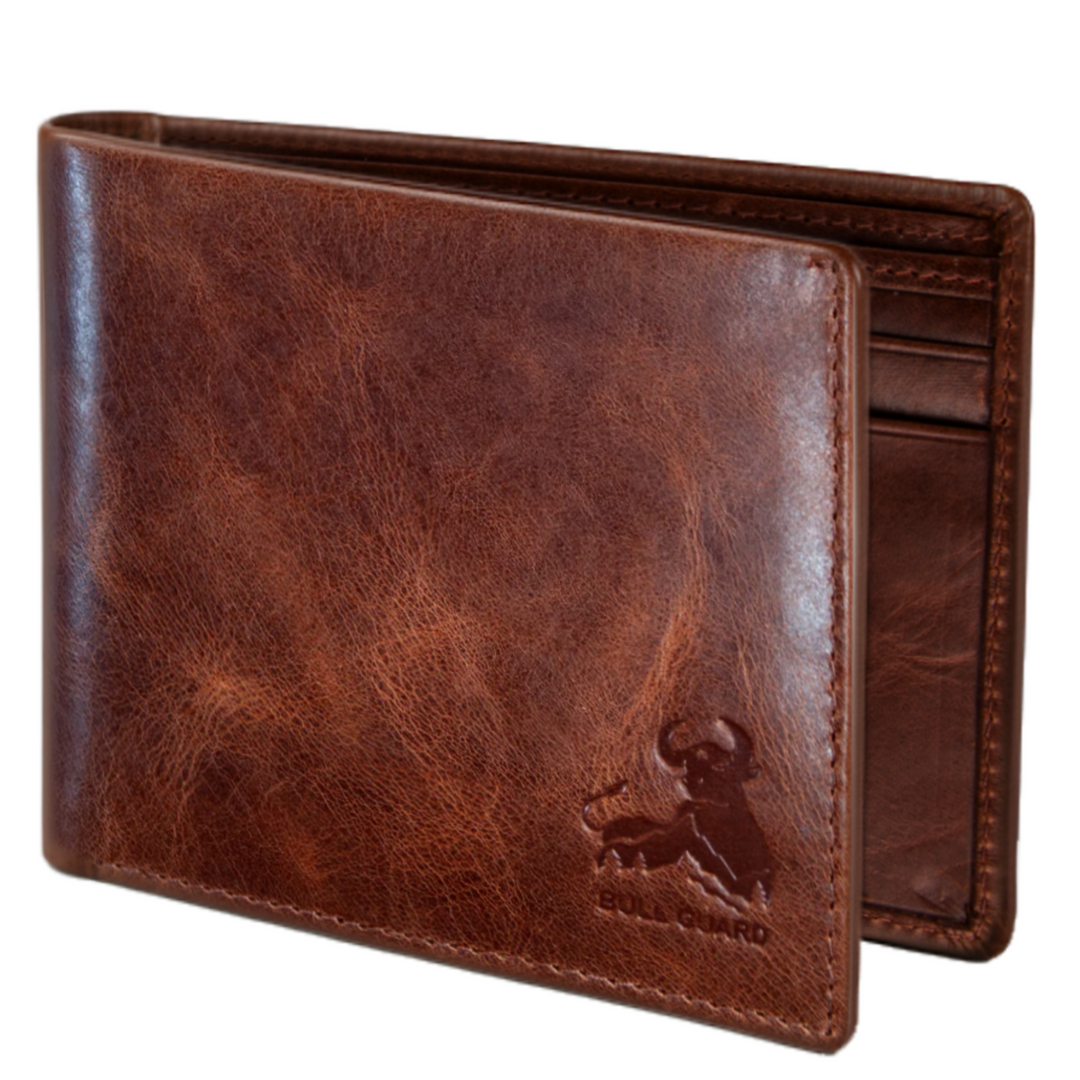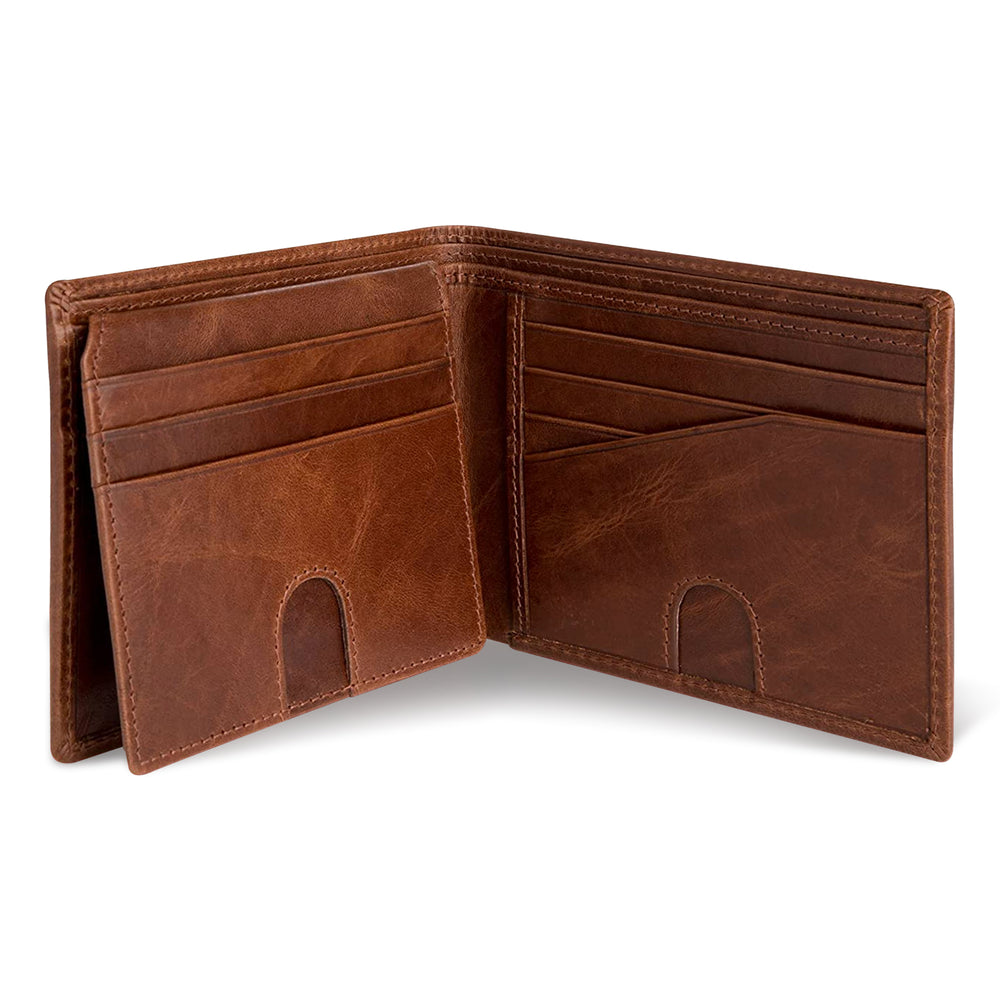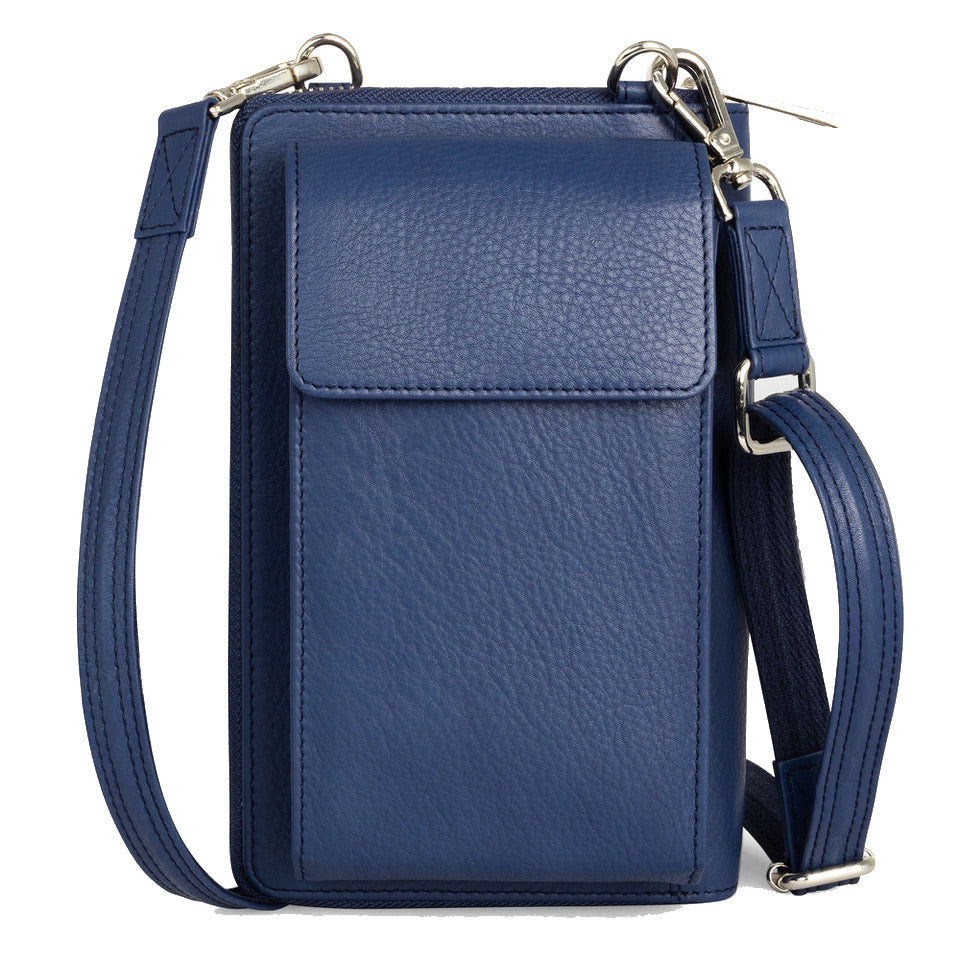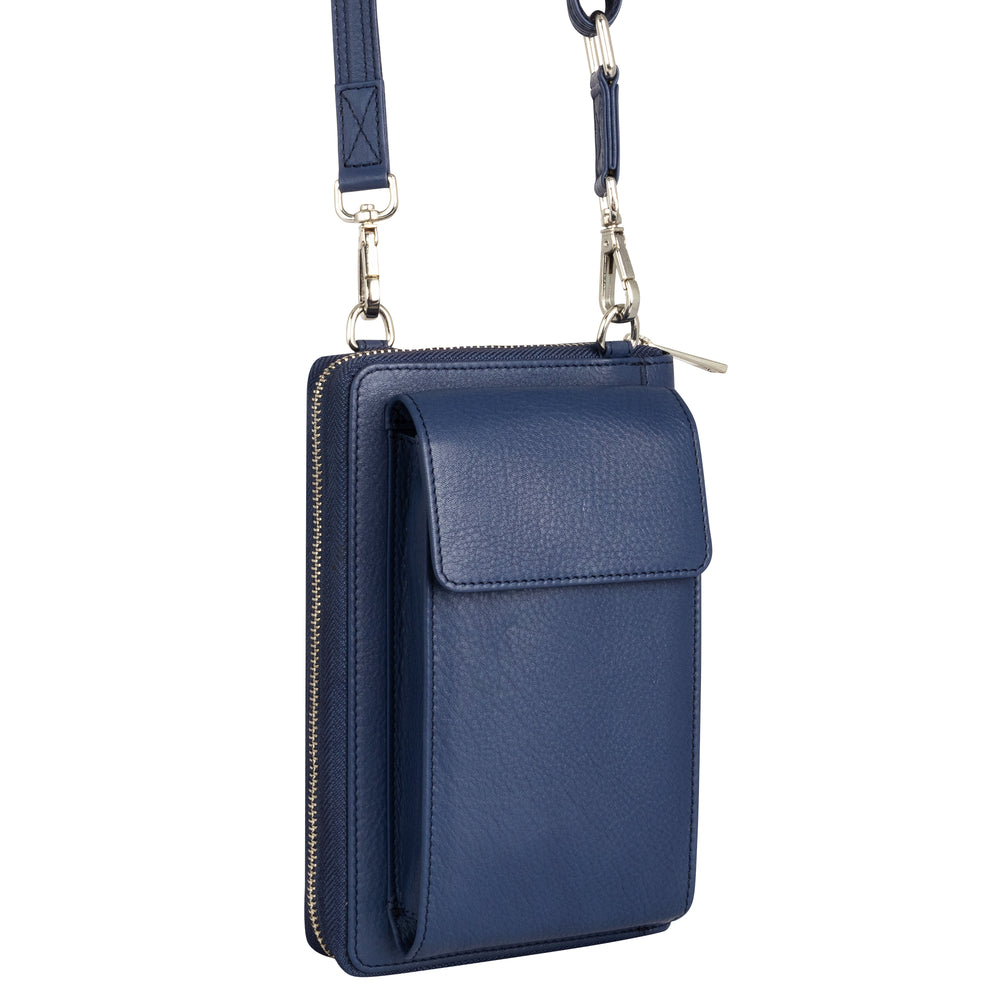Key Takeaways
- The best accessories, including men's watches, are built to last and designed with purpose.
- A quality timepiece evolves from a simple accessory to a trusted companion.
- Mens watches develop character over time, reflecting the wearer's daily experiences.
- The philosophy behind Bull Guard wallets applies equally to selecting the right men's watch.
Men's Watches Recommendations: Expert 2025 Picks
In my years crafting Bull Guard wallets, I've learned that the best accessories share common DNA: they're built to last, designed with purpose, and become better with time. The same philosophy applies to mens watches recommendations, the right timepiece transforms from mere accessory to trusted companion, developing character alongside your daily adventures.
Today's watch market offers everything from $50 digital displays to $50,000 Swiss masterpieces. Yet the best choices often lie between extremes, where craftsmanship meets practicality. Just as I sketch every Bull Guard wallet to balance form and function, choosing the right watch requires understanding how materials, movement, and design serve your actual lifestyle, not just your aspirations.
This guide cuts through marketing noise to deliver what matters: durability, value, and timeless appeal. Whether you're seeking your first quality timepiece or upgrading from a worn favorite, these recommendations prioritize watches that age gracefully, perform reliably, and complement both city streets and mountain trails. If you're also looking to upgrade your everyday essentials, consider the Bifold Slim with or without Airtag for a sleek, functional wallet, or explore the Airtag Leather Card Holder Wallet for Men for added security and style.
What Makes a Great Men's Watch? Core Qualities Every Buyer Should Know
Five pillars separate exceptional watches from mere timekeepers: reliability, quality materials, practical design, proper fit, and timeless aesthetics. These mirror the standards I apply to every Bull Guard creation, each element must earn its place through real-world performance.
Reliability means consistent timekeeping across temperature changes, daily wear, and occasional impacts. Quality movements, whether quartz or mechanical, maintain accuracy within acceptable ranges (±15 seconds daily for automatics, ±15 seconds monthly for quartz). Materials determine longevity, stainless steel cases resist corrosion, sapphire crystals prevent scratches, and genuine leather straps develop rich patina rather than cracking.
Marcela's Insight: Like full-grain leather that improves with age, the best watches develop character through use. Avoid pieces that look perfect forever, they lack the soul that comes from living alongside their owner.
Practical design prioritizes legibility and functionality over flashy complications. The best everyday watches feature high-contrast dials, luminous markers, and intuitive crown operation. Proper fit ensures comfort during 12-hour wear sessions, cases should sit flush against your wrist without overhang or gaps. Timeless aesthetics transcend trends, remaining relevant decades after purchase.
Test watch quality by examining case finishing, crown threading smoothness, and bracelet/strap construction. Premium pieces show consistent brushing patterns, precise engravings, and solid end links that don't flex under pressure.
Types of Men's Watches and Which Style Fits Your Needs

Understanding watch categories simplifies selection by matching timepiece characteristics to your lifestyle demands. Each type evolved for specific purposes, though modern designs often blur traditional boundaries.
Dress watches emphasize elegance through thin cases (under 10mm), minimal complications, and refined materials. They pair with business attire and formal occasions but lack sports watch durability. Dive watches feature rotating bezels, luminous markers, and 200+ meter water resistance, making them excellent everyday choices even if you never explore underwater.
| Watch Type | Key Features | Best For | Notable Example |
|---|---|---|---|
| Field/Pilot | Large numerals, high contrast, 100m+ water resistance | Outdoor activities, casual wear | Hamilton Khaki Field |
| Chronograph | Stopwatch function, multiple subdials | Sports timing, professional use | Omega Speedmaster |
| GMT/Travel | Dual time zones, 24-hour indicators | Frequent travelers, shift workers | Rolex GMT-Master |
| Digital/Smart | Electronic display, connectivity features | Fitness tracking, tech integration | Garmin Fenix series |
Chronographs add stopwatch functionality through pushers and subdials, appealing to racing enthusiasts and professionals who time activities. However, additional complications increase thickness and complexity. Field watches prioritize legibility and durability, featuring large Arabic numerals and robust construction that handles outdoor adventures.
Choose based on primary use: dress watches for office environments, dive watches for versatility, field watches for outdoor pursuits, and chronographs when timing functions add genuine value to your activities. For more insights on top-rated men's accessories, you might find value in this overview of top rated mens wallets.
Watch Movement Types Explained: Quartz, Mechanical, and Automatic
Movement type fundamentally affects your ownership experience, from daily accuracy to maintenance requirements. Understanding these differences prevents buyer's remorse and sets appropriate expectations.
Quartz movements use battery-powered electronic oscillation for exceptional accuracy (±15 seconds monthly). They require minimal maintenance beyond periodic battery replacement every 2-3 years. Quartz excels for daily wear, travel, and situations demanding precise timekeeping without regular attention.
Mechanical movements rely on mainspring power wound by hand daily. They offer traditional craftsmanship and the satisfaction of human interaction but demand regular winding and accept lower accuracy (±30 seconds daily). These appeal to enthusiasts who appreciate horological tradition and the tactile ritual of winding their watch.
Automatic movements are a subset of mechanical watches, winding themselves through the motion of your wrist. They combine the artistry of mechanical engineering with the convenience of self-winding, requiring only occasional manual winding if not worn daily. Accuracy is similar to hand-wound mechanicals, but automatics are ideal for those who wear their watch regularly and want a blend of tradition and practicality.
For those who appreciate slim, minimalist accessories, the Slim Leather Wallet is a great complement to a refined watch collection.
Must-Know Watch Components and Materials
Quality materials determine a watch's durability and comfort, just as full-grain leather transforms a Bull Guard wallet from accessory to lifelong companion. Understanding key components helps you evaluate craftsmanship and make informed purchasing decisions.
Case materials significantly impact weight, durability, and price. Stainless steel 316L offers excellent corrosion resistance and affordability, while titanium provides 40% less weight with superior strength. Gold cases add luxury but require careful handling. Case diameter typically ranges from 36mm (dress watches) to 45mm+ (sports watches), with thickness affecting comfort under shirt cuffs.
Crystal types protect the dial and influence clarity. Sapphire crystal, second only to diamond in hardness, resists scratches but can shatter on impact. Mineral crystal offers good scratch resistance at lower cost, while acrylic provides impact resistance but scratches easily. Anti-reflective coatings improve readability in bright conditions.
Strap and bracelet materials affect comfort and style versatility. Leather straps, from supple calfskin to rugged buffalo hide, develop character over time, similar to Bull Guard wallets. Steel bracelets provide durability and water resistance, while NATO straps offer casual versatility and quick-change convenience. Quality stitching and edge finishing indicate superior leather craftsmanship.
Material Quality Indicators
Steel: Look for 316L stainless steel marking and solid end links
Leather: Check for consistent grain, clean edges, and reinforced attachment points
Crystal: Sapphire should feel cold to touch and show no distortion
For a deeper dive into the world of men's accessories, explore this guide to brands of mens wallets and discover how craftsmanship translates across categories.
Size & Fit, How to Pick the Right Watch for Your Wrist

Proper fit transforms a watch from accessory to natural extension of your arm. Like selecting the right Bull Guard wallet size for your daily carry needs, watch sizing requires understanding your wrist dimensions and lifestyle preferences.
Measuring your wrist accurately requires a flexible tape measure placed snugly around your wrist bone. Most men's wrists measure 6.5-8 inches circumference. Case diameter should occupy 60-70% of your wrist width for balanced proportions. Lug-to-lug distance (case length) matters more than diameter, it should not exceed your wrist width to prevent overhang.
Case thickness affects comfort under shirt cuffs and overall wearability. Dress watches typically measure 6-10mm thick, while sports watches range 11-15mm. Anything over 15mm may feel cumbersome for daily wear. Consider your wardrobe, business attire requires slimmer profiles than casual wear allows.
For those who prefer a classic, multi-functional wallet, the Bifold with Flip Up ID offers both style and practicality.
Watch Care & Longevity, Maintenance, Storage, and Everyday Wear
A quality timepiece, like a well-crafted Bull Guard wallet, develops character through proper care and daily use. The difference between a watch that lasts decades versus one that fails within years often comes down to maintenance habits established from day one.
Essential Cleaning Routines by Material
Metal Bracelets and Cases: Use a soft-bristled toothbrush with warm soapy water weekly. Focus on bracelet links where skin oils and debris accumulate. Rinse thoroughly and dry with a microfiber cloth. For stubborn grime, ultrasonic cleaners work effectively but avoid them with leather-strapped watches.
Leather Straps: Never submerge leather in water. Instead, use a slightly damp cloth to wipe the surface, then condition monthly with leather cream. Rotate between multiple straps to extend lifespan, leather needs time to dry completely between wears.
Fabric and NATO Straps: These handle water well. Remove from the watch case and hand-wash with mild detergent. Air dry completely before reattaching to prevent moisture damage to the case back.
Service Intervals and Professional Maintenance
Automatic and mechanical movements require professional servicing every 3-5 years, depending on usage intensity. Quartz movements need battery replacement every 1-3 years but rarely require full service unless water damage occurs.
Schedule service when you notice: time drift exceeding 30 seconds daily, crown resistance, or condensation under the crystal. Never attempt to open the case yourself, even minor mistakes can compromise water resistance permanently.
Marcela's Maintenance Philosophy: Just as Bull Guard leather develops a unique patina through daily carry, your watch gains character through consistent care. The goal isn't pristine preservation but thoughtful maintenance that honors the craftsmanship while embracing the story each scratch tells.
Proper Storage and Protection
Daily Storage: Keep watches in a dry environment away from direct sunlight. Watch boxes with individual cushions prevent scratches and maintain organization. For automatic watches, consider a watch winder if you rotate between multiple pieces frequently.
Travel Protection: Invest in a quality watch roll or travel case. Wrap each watch individually to prevent contact damage. Remove the crown to the first position during transport to reduce stress on the movement.
Magnetic Field Avoidance: Store watches away from speakers, laptops, and magnetic clasps. Modern anti-magnetic watches resist most household magnetism, but prolonged exposure can still affect timekeeping accuracy.
For those who value extra security and organization, the Extended Slim Wallet is a smart addition to your everyday carry.
Troubleshooting Guide: Watch Fit, Function, and Repair
Even well-maintained watches occasionally present challenges. Knowing when to attempt simple fixes versus seeking professional help can save both money and potential damage to your timepiece.
Common Fit Adjustments
Bracelet Sizing: Most metal bracelets use removable links secured by pins or screws. Use proper tools, pin pushers for pinned links, small screwdrivers for screwed links. Work slowly and keep removed links for future adjustments. If uncertain, jewelers typically resize bracelets for $10-20.
Strap Replacement: Spring bars hold straps to the case. Use spring bar tools rather than improvising with knives or paperclips, which can scratch the case or break the spring mechanism. Quick-release spring bars simplify the process significantly.
Functional Issues and Solutions
Timekeeping Problems: Automatic watches gaining/losing more than 30 seconds daily may need regulation or service. Quartz watches with significant drift usually require battery replacement. Magnetization causes erratic timekeeping, professional demagnetization typically costs $20-50.
Crown and Winding Issues: Stuck crowns often result from debris or dried lubricants. Never force a resistant crown. Instead, try gentle back-and-forth rotation while pulling lightly. If this fails, professional service is necessary to avoid damaging the stem.
Water Resistance Loss: Gaskets deteriorate over time, especially with temperature fluctuations. Annual pressure testing costs $15-30 and prevents expensive water damage. Replace gaskets during regular service intervals.
When to Seek Professional Help
Attempt DIY solutions only for external adjustments like strap changes or bracelet sizing. Internal issues, movement problems, crown repairs, crystal replacement, or water damage, require professional expertise. The cost of proper repair almost always exceeds the expense of fixing botched DIY attempts.
For a comprehensive look at the evolution and history of timepieces, visit this external resource for additional context.
The Bull Guard Perspective: Why Value, Authenticity, and Design Still Matter

After years of sketching Bull Guard wallets and testing prototypes on both city streets and mountain trails, I've learned that the best accessories share common DNA: honest materials, thoughtful design, and the ability to improve with age rather than simply endure it.
The watch industry mirrors the leather goods world in many ways. Both are flooded with fast fashion alternatives that promise luxury at discount prices. Both have heritage brands trading on past glory while cutting corners on current production. And both reward those who dig deeper, who value substance over surface appeal.
When I recommend mens watches, I apply the same criteria we use for Bull Guard products. Does the movement match the marketing claims? Will the materials develop character or simply deteriorate? Can you service it locally, or does it become disposable when problems arise?
For more technical information on time and frequency standards, check out this external resource from the National Institute of Standards and Technology.
If you want to see more wallet options that pair well with your watch collection, browse the Trifold Wallet collection for versatile choices.
Frequently Asked Questions
What are the key qualities to look for when choosing a great men's watch?
Look for reliability, quality materials, practical design, proper fit, and timeless aesthetics. A great watch should perform consistently, feel comfortable, and develop character over time, much like a well-crafted Bull Guard wallet.
How do different watch movements like quartz, mechanical, and automatic affect performance and reliability?
Quartz watches offer precise, low-maintenance timekeeping powered by batteries. Mechanical watches rely on manual winding and showcase traditional craftsmanship but need regular care. Automatic watches self-wind through wrist movement, blending reliability with the charm of mechanical engineering.
Why is proper fit important when selecting a men's watch, and how can I ensure my watch fits comfortably?
Proper fit ensures comfort and prevents damage from excessive movement or tightness. Measure your wrist size and choose a watch case and strap that balance presence with wearability, adjustable straps or links help achieve a secure, natural fit.
How can I maintain and care for my men's watch to ensure it develops character and lasts over time?
Regular cleaning, avoiding extreme conditions, and proper storage protect your watch’s materials and movement. Like Bull Guard leather that patinas with use, a well-maintained watch gains unique character, becoming a trusted companion through your daily adventures.










